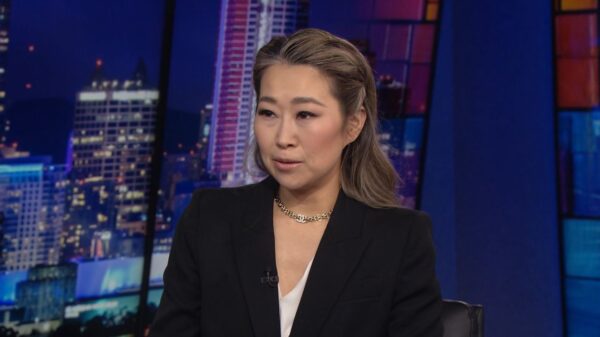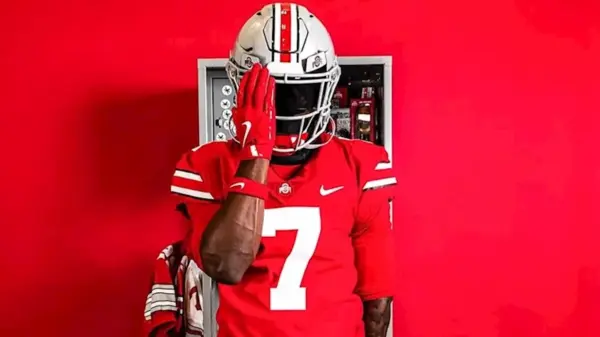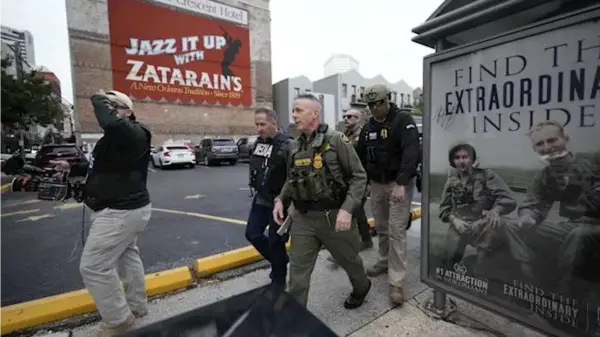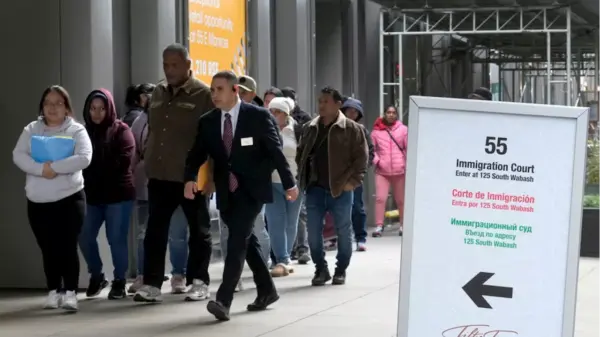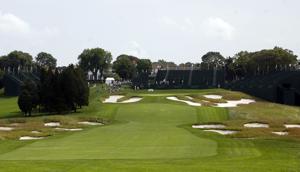The 45th Ryder Cup matches are set to take place from September 26-28, 2025, at the renowned Bethpage Black Course in Farmingdale, New York. This prestigious event promises to deliver intense competition and a thrilling atmosphere, as golfers from the United States and Europe vie for supremacy. Here’s a detailed overview of the course, hole by hole.
Course Overview
The Black Course at Bethpage State Park is known for its challenging layout and demanding design, making it a formidable test for even the most skilled golfers. Each hole presents unique challenges, from elevated tees to strategically placed bunkers.
**Hole 1: 397 Yards, Par 4**
The opening hole features an elevated tee that bends to the right, flanked by trees that block aggressive approaches. A strategic play to the left provides a better angle to the green, which is the smallest on the course and includes a front-right bunker. The green slopes sharply, requiring precision to avoid rolling off.
**Hole 2: 389 Yards, Par 4**
Continuing with another par 4 under 400 yards, this hole presents an elevated tee shot followed by a short iron to an elevated green. The fairway curves to the left; however, players must avoid deep bunkers on the right side.
**Hole 3: 210 Yards, Par 3**
This par 3 features a shallow green angled from back left to front right. Deep bunkers on the left obscure much of the flagstick, and players need to be cautious of overshooting, as anything long will drop off severely behind the green.
**Hole 4: 517 Yards, Par 5**
Although shorter than typical par 5s, this hole requires players to navigate a fairway that bends around a cluster of bunkers. The green is elevated, requiring careful placement for those attempting to reach it in two shots.
**Hole 5: 478 Yards, Par 4**
Large cross bunkers on the right create a challenging aspect for this hole. Long hitters can carry the bunkers, while others may prefer the left side, where trees obscure the view. The small, well-bunkered green demands accuracy.
**Hole 6: 408 Yards, Par 4**
A straightforward hole, though large bunkers create an illusion of a narrow fairway. The fairway drops approximately 20 feet, and players must carefully navigate their approach to a small green surrounded by more bunkers.
Mid-Course Challenges
As players progress through the course, they will encounter a mix of par 4s and par 3s that test their strategy and skill.
**Hole 7: 524 Yards, Par 4**
Playing as a par 5 for public play, this hole features a straight tee shot before bending to the right. Long hitters can reach the green in two, but they must avoid large bunkers on either side.
**Hole 8: 210 Yards, Par 3**
From an elevated tee, the green is protected by a pond in front and large bunkers to the left. A careful approach is necessary, particularly with back pin positions. The shaved bank in front of the green can lead to challenging rolls into the water.
**Hole 9: 460 Yards, Par 4**
This hole bends to the left, featuring a large bunker complex on the left side of the landing area. Players can opt for a longer shot from a contoured fairway but must be mindful of two deep bunkers guarding the front of a relatively flat green.
**Hole 10: 502 Yards, Par 4**
A straightaway hole that requires a strong tee shot to reach the fairway. Anything to the left risks landing in tall fescue or bunkers. The elevated green is also protected by bunkers.
**Hole 11: 435 Yards, Par 4**
With a blind tee shot to a fairway nestled between dunes, this hole favors right-side drives for a better angle into the green. The putting surface features a false front, complicating any putts or chips from beyond.
**Hole 12: 496 Yards, Par 4**
Arguably the most difficult tee shot, players can choose to risk hitting driver over cross bunkers or play safely to the right. The second shot leads to a large, undulating green.
Final Holes: A Test of Skill
As competitors approach the end of their rounds, the final holes are crucial for setting up potential victories or playoff scenarios.
**Hole 13: 608 Yards, Par 5**
The longest hole on the course, it is reachable in two by long hitters. Players must navigate a large bunker on the left and avoid cross bunkers short of the green, which slopes slightly from back to front.
**Hole 14: 161 Yards, Par 3**
This short hole is unique in that it played under par in previous U.S. Opens. The approach requires precision over a valley to a sloped green. Bunkers await shots that fall short.
**Hole 15: 477 Yards, Par 4**
Players face a steep climb over the final 180 yards to an elevated green protected by deep bunkers in front. Missing the fairway could severely hinder the ability to reach the green.
**Hole 16: 490 Yards, Par 4**
The tee shot drops 60 feet to a narrow fairway that angles from left to right. This hole gently bends to the left, with sprawling bunkers near the green.
**Hole 17: 179 Yards, Par 3**
With a slightly elevated green divided by a spine, this hole features a deep front bunker and others to catch errant shots. Precision is paramount.
**Hole 18: 411 Yards, Par 4**
The closing hole at Bethpage Black is among the shortest in major championship venues in the U.S. Players face a downhill tee shot to a narrow fairway, with bunkers and fescue on either side. Staying short of the bunkers allows for a shorter approach to an elevated green that slopes severely.
The Ryder Cup at Bethpage promises not only to showcase top talent but also to highlight the intricate challenges of one of the nation’s most celebrated golf courses. As the excitement builds for this international showdown, fans and players alike are eager to see who will emerge victorious on these storied grounds.





